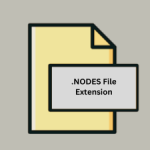.AVR File Extension

Audio Visual Research File
| Developer | Update Soon |
| Popularity | |
| Category | Audio Files |
| Format | .AVR |
| Cross Platform | Update Soon |
What is an AVR file?
The .AVR file extension is associated with Audio Visual Research (AVR) files, a specialized format used in certain audio-visual applications.
These files are utilized primarily in multimedia and digital content creation, providing a structured way to store and manage complex audio-visual data.
Understanding .AVR files can be crucial for professionals in fields such as video production, digital media research, and multimedia education, as well as for those dealing with legacy systems.
More Information.
The .AVR file format was created in the early 2000s as multimedia technologies began to advance rapidly.
Its initial purpose was to facilitate the management of complex audio and video data in a cohesive manner, particularly for research and academic purposes.
Researchers and developers needed a format that could store not only the media files but also metadata related to their usage and analysis.
The .AVR format was designed to meet these needs by combining audio, video, and metadata into a single file.
Over the years, the use of .AVR files has been primarily confined to specific sectors, such as academic research, digital media analysis, and certain professional multimedia applications.
The format allowed users to keep their data organized and accessible, which was particularly useful for projects involving large amounts of audio-visual material.
Origin Of This File.
The .AVR file extension originated with the development of specialized multimedia software designed to handle audio-visual research data.
The format was introduced to support the need for storing detailed and synchronized audio and video data in a single file, enabling more efficient analysis and manipulation of multimedia content.
While the exact origin of the .AVR file format is not widely documented, it is known to have been adopted by specific applications and research projects that required a sophisticated way to encapsulate multimedia data.
File Structure Technical Specification.
The .AVR file structure is relatively complex, reflecting its role in handling sophisticated multimedia data. Here’s an overview of its file structure and technical specifications:
- Header: The .AVR file begins with a header section that contains metadata about the file, including version information, file type, and timestamps.
- Audio Data: This section stores audio data in a compressed or uncompressed format, depending on the specific application. Audio data is usually organized in a way that aligns with the accompanying video data.
- Video Data: The video section contains frames of video data, which may be encoded in various formats such as MPEG, AVI, or custom codecs. The video data is synchronized with the audio data.
- Metadata: Metadata within an .AVR file includes information about the content, such as timestamps, descriptions, and annotations. This metadata helps in indexing and retrieving specific segments of the multimedia content.
- Footers: The footer section often includes checksums or other validation information to ensure the integrity of the file.
Technical specifications can vary depending on the software that creates and reads .AVR files. Some .AVR files may use proprietary encoding or compression methods, while others might adhere to more standardized formats for audio and video data.
How to Convert the File?
Converting .AVR files can be challenging due to their specialized nature. There are several methods to handle file conversion:
- Using Dedicated Software: Some multimedia research software and digital content creation tools offer built-in options to export or convert .AVR files to more common formats such as MP4 for video or WAV for audio.
- Third-Party Tools: There are third-party conversion tools available that may support .AVR file conversion. These tools often require careful configuration to ensure that the conversion maintains the integrity of both audio and video data.
- Custom Scripts: For advanced users, custom scripts or software libraries may be used to extract and convert the audio and video components of .AVR files separately, followed by re-encoding them into desired formats.
Advantages And Disadvantages.
Advantages:
- Unified Storage: The .AVR format allows for the storage of audio, video, and metadata in a single file, which simplifies data management and organization.
- Synchronization: It ensures that audio and video data are synchronized, which is crucial for accurate playback and analysis.
- Metadata Integration: Embedded metadata supports detailed analysis and retrieval of specific data segments, enhancing the utility of the file for research and multimedia projects.
Disadvantages:
- Proprietary Nature: The .AVR file format may be proprietary to specific applications, making it less accessible for users who do not have the corresponding software.
- Compatibility Issues: As a niche format, .AVR files may not be widely supported by mainstream multimedia applications, leading to compatibility issues.
- Complexity: The complexity of the file structure can make it challenging for users to work with .AVR files without specialized tools.
How to Open AVR?
Open In Windows
- On Windows, .AVR files can typically be opened with specialized multimedia research tools or software that supports this format. Applications like AV research tools or academic multimedia software might offer native support for .AVR files.
Open In Linux
- Linux users may face more challenges due to the specialized nature of .AVR files. However, open-source multimedia tools and custom scripts can be employed to handle these files. Libraries or software that support advanced multimedia formats may also be useful.
Open In MAC
- On macOS, the process is similar to Windows. Specialized software or academic tools designed for multimedia research may be required to open .AVR files. Conversion tools and scripts can also be used to manage these files.













